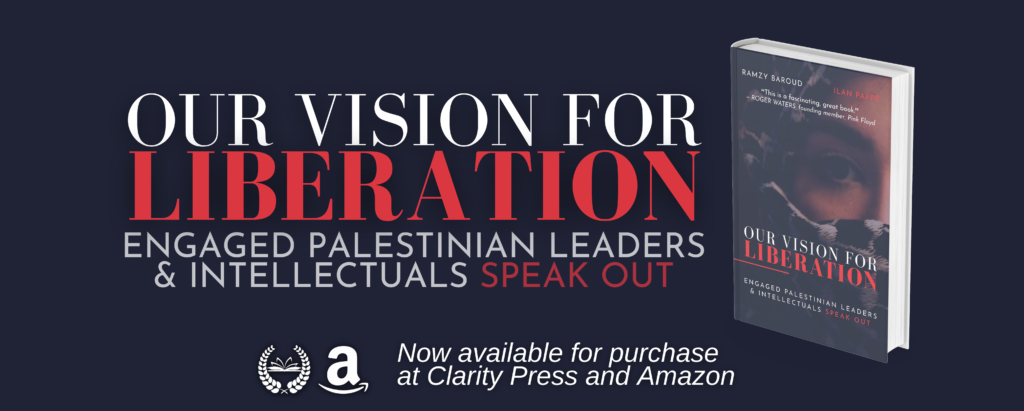By Mohammed Abu-Nimer – Washington
Arabs and Jews were separated for decades before the separation wall was built in the West Bank and around Gaza. When former Egyptian president Anwar Sadat travelled to Israel in 1977, he declared before the Knesset (parliament) that such separation can only bring devastation and alienation to Arabs and Jews alike. He came to meet the Israelis in their homes to challenge their fears.
The physical wall between the West Bank and Israel reflects how current political leaders and ideologies have deepened the Israeli-Palestinian moral, mental, physical, economic, and psychological divides. However, history shows that such divides between enemies in neighbouring and interdependent geographical areas fail to bring about genuine peace or stability (e.g. Northern Ireland, South Africa, or Germany).
There are many strategies for reducing the adverse effects of the wall. In my view, the most important approaches will address separation by creating more shared Israeli and Palestinian space.
The wall is tragic for Arab-Jewish relations because it promotes apathy, alienation, detachment, and ignorance in relation to what is happening on the other side—which together form one’s own sense of responsibility to the conflict. The wall opens the door for socialising agents – like politicians, preachers and teachers – to sustain images of the enemy as "other," while ignoring the suffering resulting from the physical and mental separation.
The short and long-term remedy to separation imposed by the wall is to mitigate its impacts by meeting face-to-face and constructing more spaces to encounter the other. It is worth investing in shared spaces for meetings, as long as the relationships are symmetrical and balanced, and the participants empowered. Productive shared spaces, such as youth encounters, economic ventures, environmental initiatives, non-violent advocacy and protests, should increase people’s capacity to be self-critical and perceive any wrongdoing on their own side, and provide tools and opportunities for participants to apply the lessons learned, and explore alternatives for a shared future (for example, a joint youth project that focuses on the negative impact of the wall with a possibility to engage their respective communities –by arranging visits, sculpturing the wall in their own towns; artists displaying their work against the wall and against separation in schools, etc.)
New shared spaces – from peace encounters and joint development projects, to farmer exchanges and clergy meetings – are a precious opportunity – a resource that needs to be professionally constructed and managed to ensure that its participants are nurtured by the encounter, and empowered to spread the humanising messages within their respective communities. A summer camp for Palestinian and Israeli high school students should be treated as a rare and almost sacred space; the various Arab-Jewish initiatives for peace and dialogue have an historic role to play in creatively constructing more spaces for shared meetings in which the realities of the separation wall are challenged and not perpetuated.
The various walls that politicians have erected between Israelis and Palestinians (symbolic and actual) have forced many into a siege mentality. For Israelis, the siege mentality takes hold when they feel they must calculate every move they make when travelling overseas. It does not help that they are restricted from travelling beyond their immediate borders to neighbouring countries and it prevents them from knowing how Palestinian counterparts think and live.
The Palestinian siege mentality is reinforced by their physical imprisonment by a wall in their own towns, by military checkpoints, and by limited access to the Israeli narrative. In fact, the siege mentality is so strong that many Palestinians are surprised by the acts of solidarity groups in Israel.
These shared spaces are able to demystify the monstrous image of the other, offering the only guarantee that future Palestinian and Israeli generations will not grow in a reality of avoidance and denial, but will instead have the opportunity to re-humanise each other. Israeli youth will no longer be able to say “we did not know;” and Palestinian youth will no longer be able to say “we can’t do anything.” They will both say, “we are trying.”
The walls around Gaza should serve as an example of what Palestinians and Israelis can expect in the West Bank if they don’t actively seek to transcend their separation: escalating violence and dehumanisation of Gazans and Hamas by the outside world, more internal Palestinian fighting, and continuous threats to Israel’s southern borders.
The more Israelis and Palestinians create shared spaces and meetings, the less likely people on both sides will flock behind leaders who propagate radical solutions and preach superiority of one side over the other. Arabs and Jews who are fighting the walls and social separations need to creatively break the fear of living side-by-side by sending a consistent message to their communities. The message should explain that a genuine mutual recognition and implementation of each others’ rights for a sovereign, equal, and independent state are the only security guarantees for both peoples.
– Mohammed Abu-Nimer is the Director of the Peacebuilding and Development Institute at American University. He is an expert on conflict resolution and dialogue for peace, focused on the Israeli-Palestinian conflict. (This article was written for the Common Ground News Service, CGNews and is reprinted with permission.)





